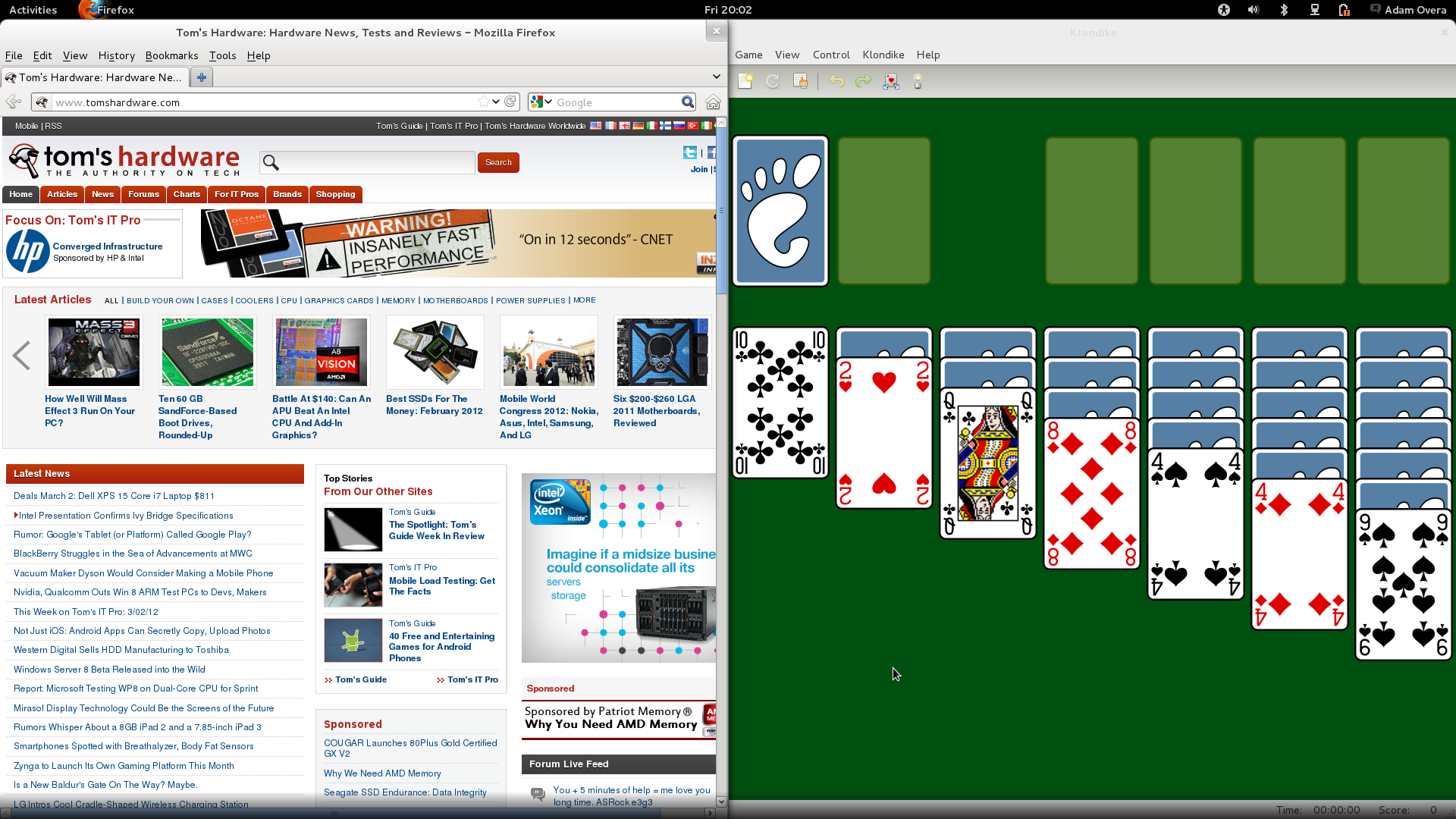Fedora 16 And GNOME Shell: Tested And Reviewed
Ubuntu and Mint don't want it; Linus called it an “unholy mess.” While most other distros are passing up or postponing GNOME Shell, Fedora is full steam ahead. Does Red Hat know something the rest of us don't? Or is GNOME 3 really as bad as everyone says?
GNOME 3 And GNOME Shell Basics
| The Core Concept |
Because GNOME 3 (and its accompanying shell) is such a drastic departure from traditional desktop GUIs, there is one basic theme you should repeat to yourself before going hands-on. Coming to terms with this key concept may help to frame much of the frustration being voiced by other folks evaluating GNOME.
First and foremost, GNOME 3 is designed to reduce clutter and add focus. To do so, GNOME Shell emphasizes full-screen tasks. The two biggest elements of traditional operating environments affected by this new approach are the desktop and task list.
Desktop?
The first familiar landmark to fall by the wayside in GNOME 3 is the functional desktop. GNOME Shell eschews the traditional desktop metaphor to which we've grown accustomed for more than 20 years. What was once called the desktop is now simply a windowing area.
If you've ever helped a hopeless technophobe with his or her PC, then you've probably seen a seriously cluttered desktop. Every single application shortcut and download often litters an average PC user's work space.
In GNOME 3, downloads go to the Downloads folder, and all applications are accessed through the new Activities overview (covered later). To the GNOME Project, removing files from the desktop is simply cutting the fat. The way GNOME sees it, old-school desktops eventually become a catch-all for anything and everything installed, downloaded, and saved.
Task List?
Get Tom's Hardware's best news and in-depth reviews, straight to your inbox.
The second familiar convention to disappear is on-screen task management. There is no pervasive taskbar, dock, or window list available in GNOME 3. The rationale is that the traditional task list is a distraction from the task at hand. The way the Activities overview handles task management off-screen helps encourage doing one thing at a time.
| Different Window Dynamics |
Like Ubuntu's Unity interface and Mac OS X Lion, GNOME 3 also attempts to emphasize full-screen apps. But GNOME 3 goes even further. As you've probably noticed from the screen shots, the minimize and maximize buttons are dropped from window title bars entirely. The goal is two-fold. First, the foreground application should be able to use all of the available screen real estate. Second, don't bother the user with window management. Instead, simply switch directly to the next task. That's achieved through the Windows section of the Activities overview, which we'll explain later.
The GNOME project also had to rethink how windows fit into the new paradigm. GNOME 3 implements a window snap feature that's identical to the way Windows 7 and Unity operate. Dragging a window by its title bar to the top of the screen causes the window to maximize. Dragging the title bar of a maximized window downward restores that window. Vertical snap is also possible. Dragging a window to the left or right side of the display fills that half of the screen.
Window snap is a great addition to Windows 7, Unity, and KDE. But without minimize and maximize/restore buttons, it's an absolute necessity in GNOME 3. Window snap is the way to maximize and restore windows here. Luckily, windows can still be resized in the traditional manner; hovering the cursor over a window border changes the cursor arrow into resize brackets.
| Shiny And New |
Mutter
GNOME Shell uses a new window manager known as Mutter. This is based on the Clutter toolkit, which first appeared in Moblin (then MeeGo, now known as Tizen). In fact, the name Mutter is a mixture of the words Metacity (the GNOME 2 window manager) and Clutter.
The video below, which showcases some of GNOME Shell's graphical effects, may look familiar to anyone who already knows MeeGo.
While not nearly as polished as Compiz, Mutter accomplishes the few effects currently available in an admirable manner.
Adwaita
In addition to the visual effects, 2D screen elements also receive a bit of polish in GNOME 3. The default GTK+ theme is called Adwaita. Its primary color palette consists of black, white, gray, silver, and blue. The new upper-panel and most of the Activities overview consists of black with whitish-gray text, icons, and accents. Title bars and buttons employ silver tones, while the window borders, scroll bars, and much of the window contents are in shades of gray. Window and application text remains black, creating a visual boundary between the white text on black backgrounds inherent to the OS controls.
There are now also heavy surround shadows applied to window borders.
Although pronounced drop or surround shadows are pretty much a cheap trick, they still deliver a faux-3D layered look effectively.
Icons
The default GNOME icon set is updated, too, sporting a glossy sheen. They now scale up to 256x256 pixels.
Most of the new icons are a major improvement, especially Calculator, Terminal, and Gedit. However, the simple brown folder icons in the updated Nautilus file manager are pretty weak-looking.
As a set, the icons look good. But the default applications available in Fedora 16 make them appear a little monochromatic. In a clean copy of Fedora 16, the Applications side of the Activities overview is a wash of dull grays, weak blues, drab browns, with black and white, and a few splashes of red thrown in.
Once more applications are installed, the monotony is broken up, and the icon set begins to shine.
Now that we've introduced some of the GNOME 3 basics, we'll walk you through GNOME Shell piece by piece, starting with an empty desktop.
Current page: GNOME 3 And GNOME Shell Basics
Prev Page Graphics, Wi-Fi, And 32-bit Libs Next Page GNOME Shell Desktop, Panel, And Notifications


